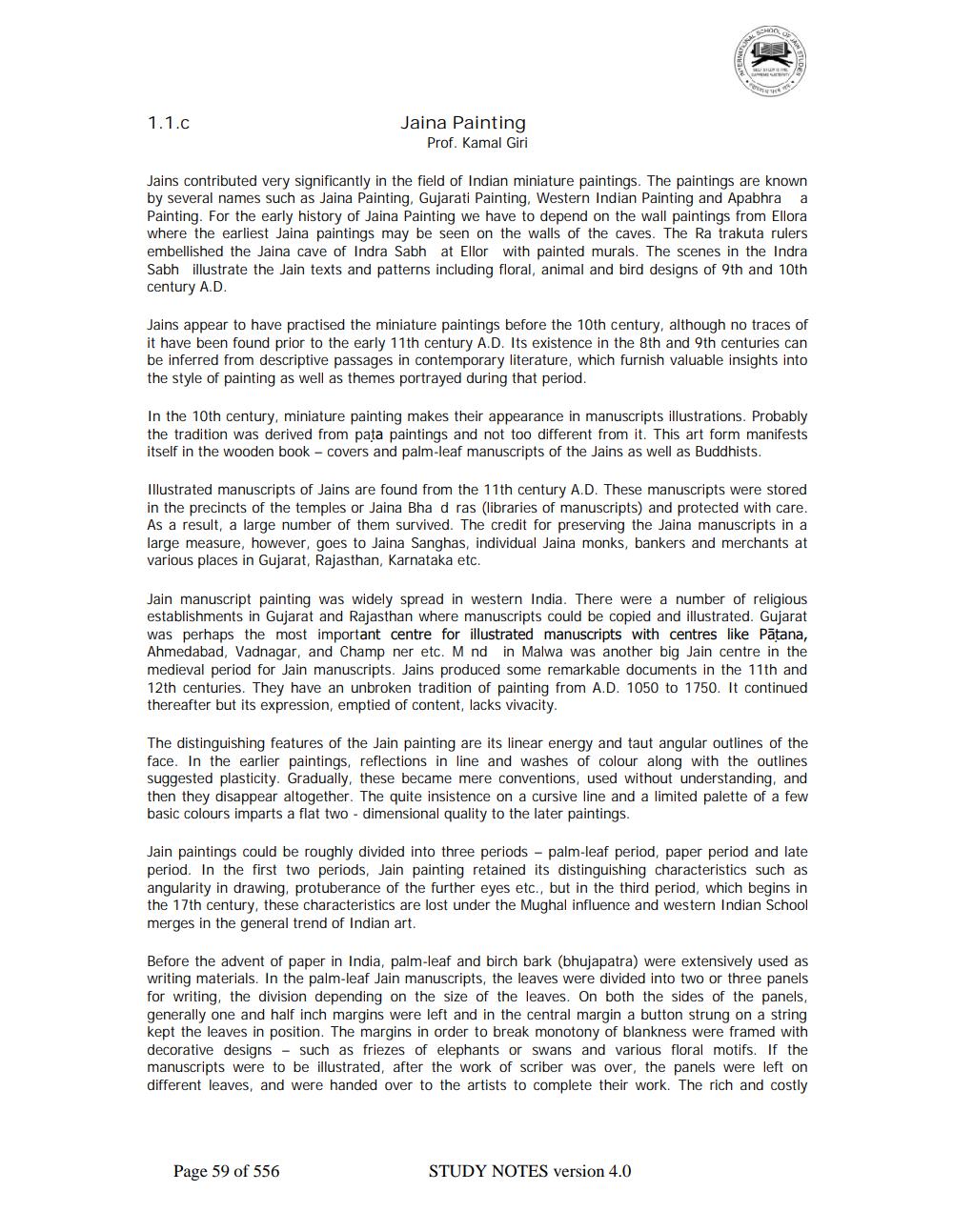________________
1.1.c
Jaina Painting Prof. Kamal Giri
Jains contributed very significantly in the field of Indian miniature paintings. The paintings are known by several names such as Jaina Painting, Gujarati Painting, Western Indian Painting and Apabhra a Painting. For the early history of Jaina Painting we have to depend on the wall paintings from Ellora where the earliest Jaina paintings may be seen on the walls of the caves. The Ra trakuta rulers embellished the Jaina cave of Indra Sabh at Ellor with painted murals. The scenes in the Indra Sabh illustrate the Jain texts and patterns including floral, animal and bird designs of 9th and 10th century A.D.
Jains appear to have practised the miniature paintings before the 10th century, although no traces of it have been found prior to the early 11th century A.D. Its existence in the 8th and 9th centuries can be inferred from descriptive passages in contemporary literature, which furnish valuable insights into the style of painting as well as themes portrayed during that period.
In the 10th century, miniature painting makes their appearance in manuscripts illustrations. Probably the tradition was derived from pata paintings and not too different from it. This art form manifests itself in the wooden book - covers and palm-leaf manuscripts of the Jains as well as Buddhists.
Illustrated manuscripts of Jains are found from the 11th century A.D. These manuscripts were stored in the precincts of the temples or Jaina Bha d ras (libraries of manuscripts) and protected with care. As a result, a large number of them survived. The credit for preserving the Jaina manuscripts in a large measure, however, goes to Jaina Sanghas, individual Jaina monks, bankers and merchants at various places in Gujarat, Rajasthan, Karnataka etc.
Jain manuscript painting was widely spread in western India. There were a number of religious establishments in Gujarat and Rajasthan where manuscripts could be copied and illustrated. Gujarat was perhaps the most important centre for illustrated manuscripts with centres like Pātana, Ahmedabad, Vadnagar, and Champ ner etc. M nd in Malwa was another big Jain centre in the medieval period for Jain manuscripts. Jains produced some remarkable documents in the 11th and 12th centuries. They have an unbroken tradition of painting from A.D. 1050 to 1750. It continued thereafter but its expression, emptied of content, lacks vivacity.
The distinguishing features of the Jain painting are its linear energy and taut angular outlines of the face. In the earlier paintings, reflections in line and washes of colour along with the outlines suggested plasticity. Gradually, these became mere conventions, used without understanding, and then they disappear altogether. The quite insistence on a cursive line and a limited palette of a few basic colours imparts a flat two-dimensional quality to the later paintings.
Jain paintings could be roughly divided into three periods - palm-leaf period, paper period and late period. In the first two periods, Jain painting retained its distinguishing characteristics such as angularity in drawing, protuberance of the further eyes etc., but in the third period, which begins in the 17th century, these characteristics are lost under the Mughal influence and western Indian School merges in the general trend of Indian art.
Before the advent of paper in India, palm-leaf and birch bark (bhujapatra) were extensively used as writing materials. In the palm-leaf Jain manuscripts, the leaves were divided into two or three panels for writing, the division depending on the size of the leaves. On both the sides of the panels, generally one and half inch margins were left and in the central margin a button strung on a string kept the leaves in position. The margins in order to break monotony of blankness were framed with decorative designs - such as friezes of elephants or swans and various floral motifs. If the manuscripts were to be illustrated, after the work of scriber was over, the panels were left on different leaves, and were handed over to the artists to complete their work. The rich and costly
Page 59 of 556
STUDY NOTES version 4.0




